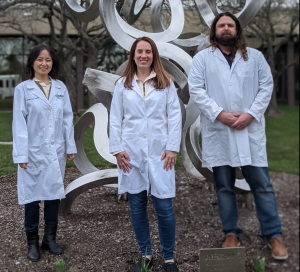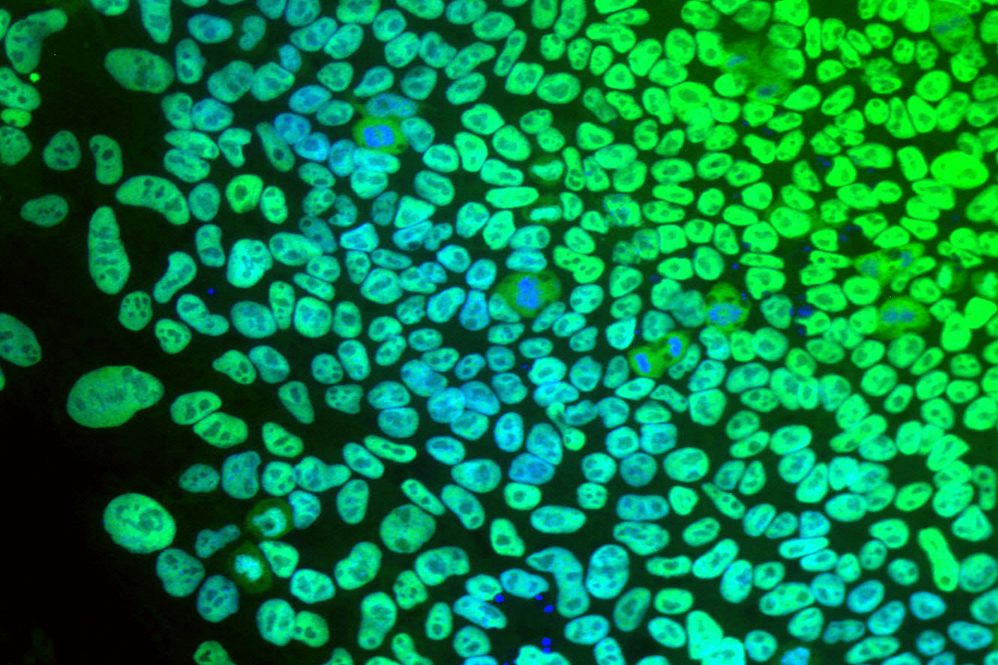The Stem Cell and Genome Editing Cores at the University of Connecticut have merged to create a one-stop shop for researchers – the Cell and Genome Engineering Core.
The Stem Cell Core was founded in 2006 to support stem cell research in Connecticut at a time when there were heavy federal restrictions on the use of embryonic stem cells (ESCs). Human embryos start as a clump of cells. As this clump of cells divides and develops, they gradually specialize into the different types of cells that make up a human body.
ESCs can only be derived from these early clumps of cells donated by couples undergoing in vitro fertilization. They are only allowed to be used for research purposes. The Stem Cell Core previously made three human ESC lines, which are available to all researchers.
The Stem Cell Core also uses “reprogramming” technology to revert adult cells back to stem cells. These are known as induced pluripotent stem cells (iPSCs). This technology can be used to make stem cell lines from cells obtained from a person with a particular genetic condition and does not require the use of an embryo.
The Core can also do the opposite – differentiate these stem cells into a specific kind of mature cell. Specifically, they can produce neural cells and are currently working to expand into other types of cells that can be purchased from the Core.
Christopher Stoddard, a research associate at UConn Health, had been offering genome editing services using CRISPR technologies through the Human Genome Editing Core. CRISPR technologies allow scientists to correct or engineer genetic mutations in human ESCs and other mammalian cell lines in order to study the genetic basis for diseases.
Given how closely related these efforts were, it only made sense to merge the cores into a single entity housed at the Cell and Genome Sciences building in Farmington. The facility is part of UConn’s Center for Open Research Resources & Equipment (COR2E).
“Having the two arms of the Core working together allows us to provide a one-stop shop for generating almost any human stem cell model your research might need,” Noelle Germain, lab manager for the Cell and Genome Engineering Core and assistant professor of genetics and genome sciences, says.

The Core provides unique models for genetic research. Previously, researchers would need to develop these models themselves. This is a time and resource-intensive process and many researchers do not have the expertise of the Core staff.
“Our main goal is to be able to generate cell models so researchers don’t have to focus on developing them and can spend their time doing the downstream research,” Stoddard says.
One of the Core’s missions is to support rare disease research by providing a variety of fundamental services to researchers.
In addition to reprogramming patient samples into iPSC lines, the Core also has the technology and skills to produce isogenic (genetically identical) disease and control cell lines. It is often difficult to determine what deficits a cell has when using patient samples. There are millions of genetic differences between people, creating a lot of “noise” to wade through when trying to determine which differences are relevant to a phenotype.
The Core can help to make pairs of cell lines identical to each other except for the specific mutation a researcher is interested in. This is done in one of two ways using CRISPR technology. They either take a healthy cell line and mutate the gene of interest, or they correct the gene in an iPSC line derived from a patient who has that particular mutation. This is a remarkably effective way to study the genetic underpinnings of rare diseases.
The Core’s service allows researchers to be sure the mutation is the only thing responsible for the effect they observe.
“It can validate whether the mutation causes the phenotype you observe in your patient samples,” Stoddard says.
Another service the Cell and Genome Engineering Core offers is cell banking, which allows researchers to be confident their resources are being managed safely.
“It’s a good investment to have experts store and take care of your valued resources – your cell model systems,” Germain says.
Stormy Chamberlain, an associate professor of genetics and genome sciences and now director of the merged Core, conducts groundbreaking work on three rare diseases: Angelman, Prader-Willi, and Dup15q syndromes, using iPSC lines she derived from these patients. When dozens of other researchers around the world wanted to use these cells to build on her work, the Core stepped in to distribute them for Chamberlain.
The Core is also beginning a collaboration with the Shriner’s Hospitals for Children. There are many medical professionals at Shriner’s who are experts in rare diseases but may lack experience working with stem cells.
“We provide a good bridge that allows us to help them,” Stoddard says.
The Core also offers training to labs just beginning to work with stem cells. By extending their expertise, the Core supports research far beyond its own staff.
“We can help new labs from the ground up to get started with stem cell projects,” Germain says.
The merged Core provides a host of unique services with the potential to have a valuable impact on stem cell and genetics research at UConn and beyond.
“We’re using the merged Core to support the UConn research community and global research as well,” Germain says.



